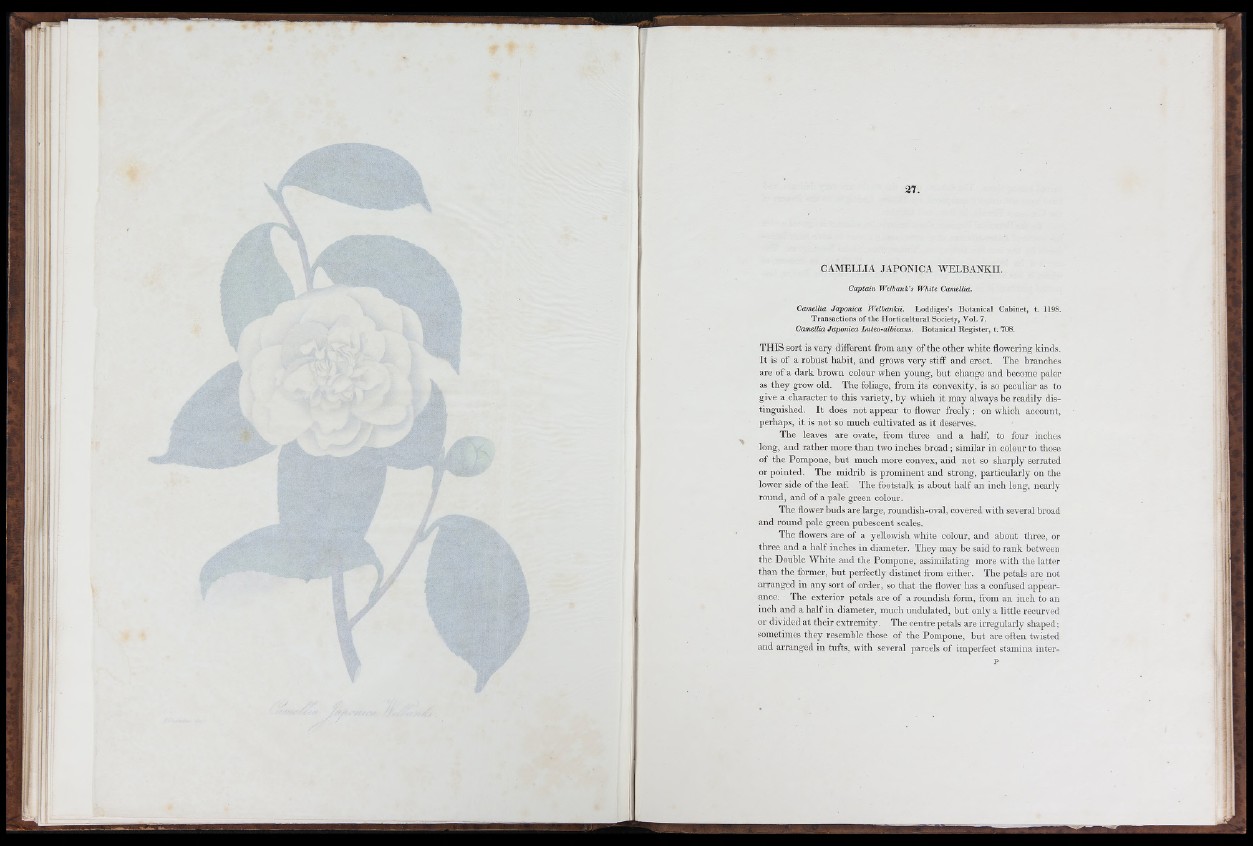
27.
CAMELLIA JAPONICA WELBANKII.
C a p ta in W e lb a n k 's W h ite Camellia.
Camellia Ja pónica W e lbank ii. L o d d ig e s ’s B o ta n ic a l C a b in e t, t. 1198.
T ra n s a c tio n s o f th e H o r tic u ltu r a l Soc ie ty , V o l. 7.
Camellia J ap ó n ica L u teo-albicans. B o ta n ic a l R e g is te r , t. 708.
THIS sort is very different from an y of the other white flowering kinds.
I t is of a robust habit, and grows very stiff and erect. The branches
are of a dark brown colour when young, b u t change and become paletas
they grow old. The foliage, from its convexity, is so peculiar as to
give a character to this variety, by which it may always be readily distinguished.
I t does not appear to flower freely; on which account,
perhaps, it is not so much cultivated as it deserves.
The leaves are ovate, from three and a half, to four inches
long, and rather more than two inches broad ; similar in colour to those
of the Pompone, b u t much more convex, and not so sharply serrated
or pointed. The midrib is prominent and strong, particularly on the
lower side of the leaf. The footstalk is about half an inch long, nearly
round, and of a pale green colour.
The flower buds are large, roundish-oval, covered with several broad
and round pale green pubescent scales.
The flowers are of a yelloxvish white colour, and about three, or
three and a half inches in diameter. They may be said to rank between
the Double White and the Pompone, assimilating more with the latter
than the former, b u t perfectly distinct from either. The petals are not
arranged in any sort of order, so th a t the flower has a confused appearance.
The exterior petals are of a roundish form, from an inch to an
inch and a h alf in diameter, much undulated, b u t only a little recurved
or divided at their extremity. The centre petals are irregularly shaped;
sometimes they resemble those of the Pompone, b u t are often twisted
and arranged in tufts, with several parcels of imperfect stamina inter